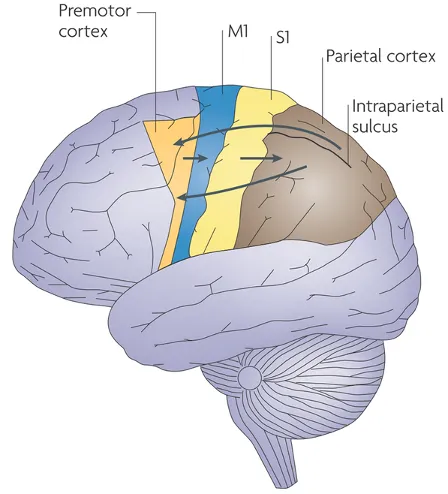This time I'm writing about mirror neurons, it is slightly different from my previous two posts, since I do not review and present one paper, but I will write about one topic and draw back to two papers while doing so. The papers are: “The functional role of the parieto-frontal mirror circuit: interpretations and misinterpretations” by Giacomo Rizzolatti and Corrado Sinigaglia and “Neural and Computational Mechanisms of Action Processing: Interaction between Visual and Motor Representations” by Martin Giese and Giacomo Rizzolatti. Looking at the authors you can see that Giacomo Rizzolatti wrote both of them and that's no coincidence, since he was also the one who discovered mirror neurons in 1992.
What are Mirror Neurons?
A mirror neuron is a neuron (a neuron is a nerve cell that processes information, they are the primary component of the central nervous system and the “stars” of the brain cells) that get activated when observing an action, as well as when doing the same action. So it is thought, that they help to understand the action of others. Is also speculated that these neurons play a role in imitation and empathy, two “high-level” features of humans (and some animals), although nothing is proven so far.
Evidence of Mirror Neurons
Mirror neurons have been first discovered in the premotor cortex of macaque monkeys, further research showed that they also exist in many cortical regions and brain centres of other monkeys, birds and even humans. In order to discover the mirror neurons in monkeys, the researchers trained them to grasp objects with pliers (normal pliers and reverse pliers, pliers which you have to push in order to open) and recorded the output of single neurons, then they let the monkeys observe the same actions and the same neurons were active, as when the monkeys did the action themselves. To observe this in humans fMRI was used (a brain imaging technique that observes parts of the brain, by measuring the blood flow in them) and the participants were watching videos of human and robot arms and an activation of the premotor cortex, the same brain area that is also responsible for the control of movement in humans, happened. This showed that mirror neuron system in humans is also able to generalise and abstract more (compared to monkeys).

Source: Wikipedia
Motor Theory of Action Understanding
After this discovery a lively discussion about what these motor neurons are good for started. One popular theory is that they help to understand directly the goal of others, without the need to do some additional “inferential processing”. But this view has been criticised, one criticism was that if the activation of mirror neurons was a copy of an observed movement it is not general enough to capture the goal of that movement and if it is general enough to capture the goal of that movement, it can not be seen as a direct matching of the sensory input and the motor output. Typically scientists who hold this view, deny the importance of motor system for cognitive functions. Another argument against the role of mirror neurons in action understanding is, that individuals are able to understand the actions of others, even if they are not able to do them themselves. There is no doubt that we are able to understand actions, which we can not perform ourselves. The debate on which role mirror neurons play in the understanding of actions is still ongoing.
Potential Roles of the Mirror Neuron System in Humans
As I mentioned above, since its discovery a lot of theories about what role the mirror neuron system is playing in human cognition, but so far no final conclusion is reached (mirror neurons were discovered in 1992, the number of publications about mirror saw a steady grow since 2003, so it is still kind of a“new” thing). It apparently does help to understand actions, but it still does not give any insights on why these actions are performed, although understanding an action could be seen as the first step to understand the reasons why this action was performed. Some studies have shown that there might be a link between autism and the mirror neuron system not working properly. This could explain, why autistic people are lacking the social and communicative skills and show different emotional responses compared to non-autistic people. But again, research is still ongoing and maybe soon neuroscience will be able to explain the underlining causes for this.
Conclusion
Mirror neurons gained a lot of attention over the past years, since they offer a mechanism that unifies action production and action understanding, where actions are understood “from the inside”. This linking mechanism might play a role in more abstract functions than just motor control, like explaining empathy.